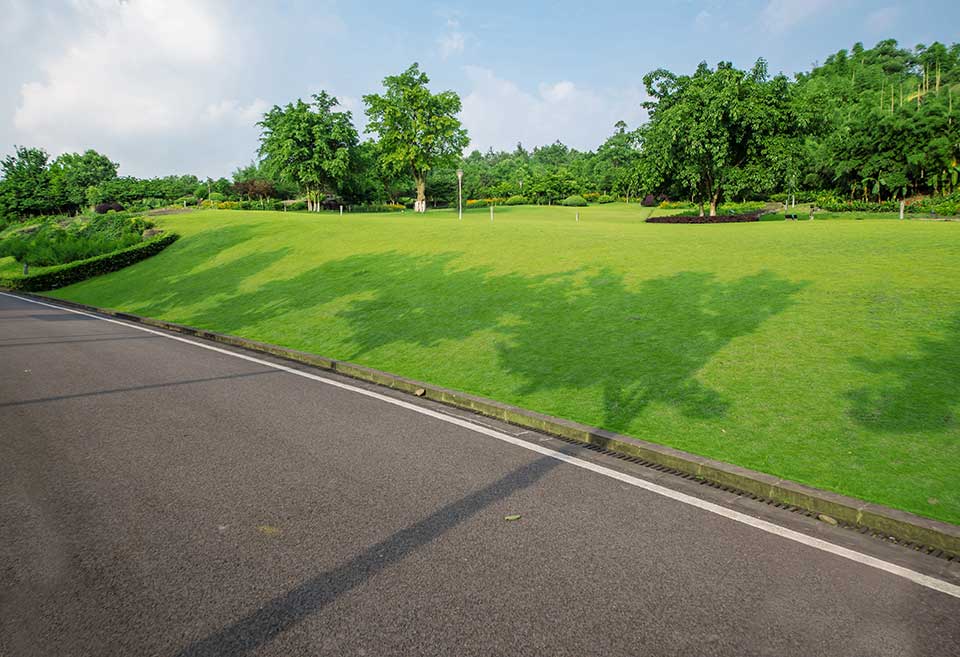Selecting a suitable surface for a new driveway during the planning and installation phase can be complex. Numerous factors come into play, including style, finish, cost, longevity, and installation convenience.
Within this comprehensive guide, we compare block paving and tarmac to assist you in making the optimal choice.
Advantages & Disadvantages Of Block Paving For Driveways
Here are some factors to contemplate if you’re considering a block paving driveway.
Advantages
Flexibility
A significant contributing factor to the widespread appeal of block paving is its versatility in terms of aesthetics. A wide variety of paving block options exist, encompassing choices such as black block paving and brindle block paving.
These paving blocks can be arranged in diverse patterns, making it relatively easy to discover a style that harmonizes with most driveways and residences.
Furthermore, block paving offers an extensive array of block colors you’re seeking a driveway that harmonizes seamlessly with a particular garden color scheme. Circle designs stand out as a favored option for block paved driveways. Incorporating curves into your area can impart a more fluid and less rigid feel.
Durable and with enduring longevity
Another advantage of opting for block paving for your new driveway is its superior durability and longevity compared to a tarmac driveway, even in adverse weather conditions. Concrete block paving is designed to be exceptionally robust and can endure substantial weights, including large vehicles and multiple cars.
Upkeep
Block paving driveways also offer the advantage of being relatively straightforward to repair, making maintenance typically easier than tarmac driveways and other surfaces.
If any paving blocks become dislodged or sustain damage, they can be lifted and either replaced or reinstalled. When executed correctly, a well-done repair should leave no noticeable trace.
Disadvantages
One of the primary drawbacks of block paving is its potential to be pricier than tarmac driveways. Nevertheless, it still falls within the mid-range price category when evaluating various driveway options.
Installation Process
Installing block paving may take longer, and its complexity can vary depending on the design and layout of your new driveway. As you’ll learn in this guide, the sub-base quality is paramount, and taking your time with this aspect is imperative. Even with an experienced professional installer, the installation process should be smooth.
If you have budget constraints, opting for a more straightforward design can reduce installation duration.
Advantages & Disadvantages Of Tarmac Driveways
If you’re considering selecting a tarmac driveway, here’s all the information you require.
Advantages
Cost
A tarmac or tarmacadam driveway typically comes at a lower cost than a driveway constructed with block paving. This price difference arises from tarmac being a more budget-friendly material and often more straightforward to install than block paving.
Tarmac driveways typically require only about one day for installation, whereas block paving for a driveway of similar size may take several days. This reduction in labor time leads to notable cost savings in the overall project.
Installation Process
As previously mentioned, installing tarmac driveways is faster and more straightforward than block paving driveways, resulting in a significantly shorter period of driveway inactivity.
Disadvantages
Durability
While tarmac driveways are commonly recognized for their durability, they tend to have a shorter lifespan than block paving driveways, although they still exhibit considerable longevity. Cracking or puddling over time is often linked to improper installation and inadequate base preparation. If you’re determined to have a tarmac driveway, engaging a reputable professional with strong recommendations is essential to ensure proper installation.
Handling
Laying asphalt can be exceptionally challenging for very compact or uniquely shaped driveways. This is primarily due to the need for multiple machines during tarmac installation, which may need help to operate efficiently within extremely confined and restricted spaces.
Limited Flexibility
Due to its crushed stone and tar composition, tarmac typically possesses a naturally dark color, limiting its aesthetic versatility. While it’s possible to opt for colored tarmac for your driveway, this customization can come at an additional cost.
Enhancing your living space has never been easier with FloorPup! Explore our wide selection of hardwood flooring, get expert floor care and maintenance tips, and find inspiration in our gallery. Our professional floor fitters, skilled driveway pavers, and reliable carpet repair services ensure top-quality results. Learn more about our commitment to quality on our about us page. Visit FloorPup and transform your home today!
FAQS
What is the life expectancy of block paving?
The life expectancy of block paving can vary depending on factors such as installation quality, maintenance, and usage. Generally, well-installed and adequately maintained block paving can last several decades, often exceeding 20 to 30 years. However, promptly addressing any damage or issues is crucial to maximize its longevity.
What are the disadvantages of block paving driveways?
Block paving driveways, while visually appealing and long-lasting, have drawbacks. These include the need for regular weed control, the possibility of blocks shifting or sinking over time, and a comparatively higher initial cost when compared to alternative driveway materials.
Is block paving better than concrete?
You are choosing between block paving and concrete hinges on your specific priorities. Block paving offers diverse aesthetics, ease of repair, and adequate water drainage, while concrete is prized for its durability and low maintenance. Factors like your budget, aesthetic preferences, and expectations should guide your decision.
Is block paving hard to maintain?
Maintaining block paving is relatively straightforward but does require some effort. Regular tasks like sweeping to remove debris and occasional pressure washing to keep the surface clean are essential. Additionally, weeds can grow between the blocks, so weed control is necessary. Re-sanding the joints and sealing the surface every few years helps prevent erosion and maintains the paving’s appearance. While block paving does require attention, its durability and aesthetic appeal make the maintenance effort worthwhile, ensuring a long-lasting and attractive outdoor space.


